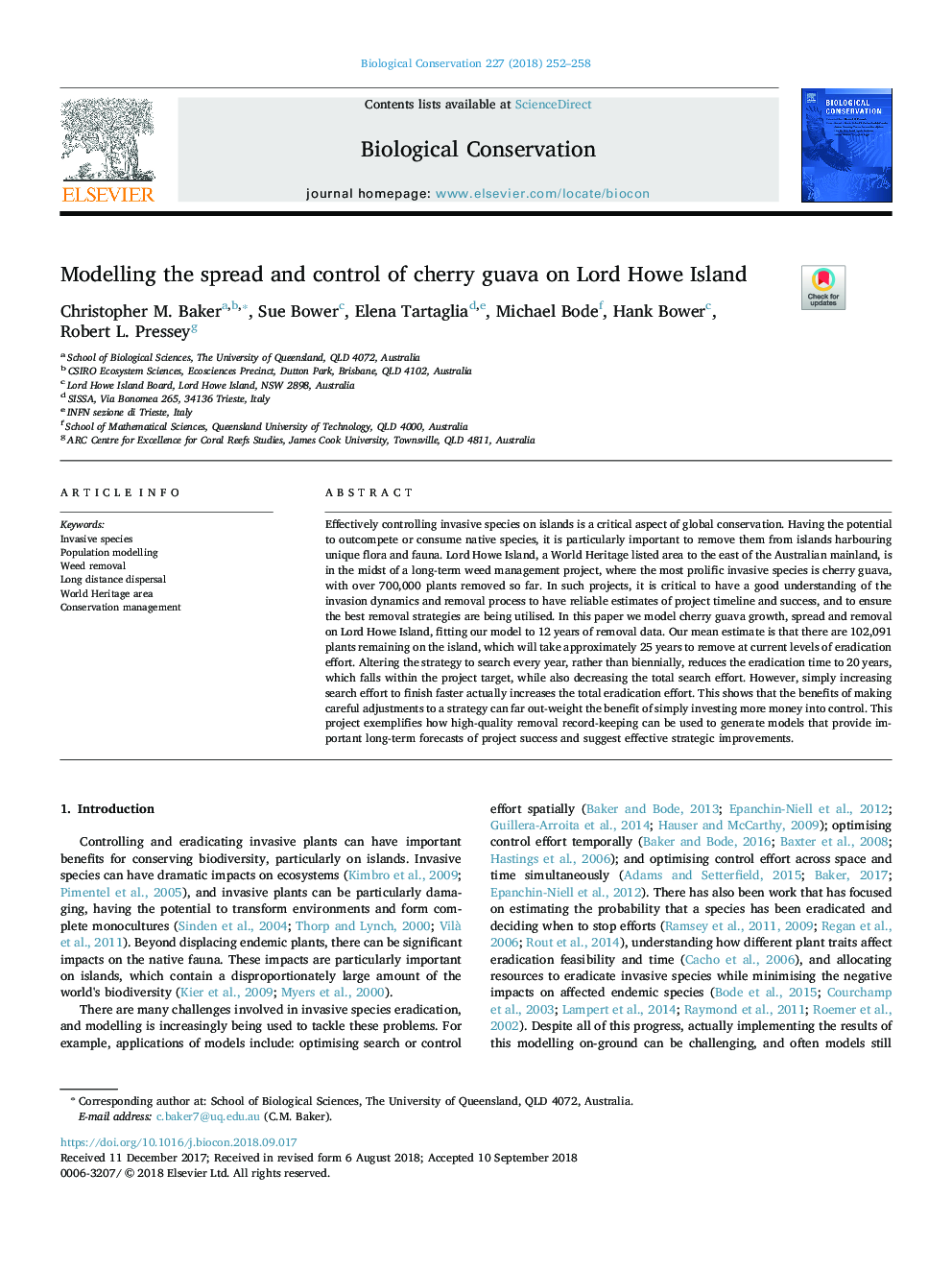| Article ID | Journal | Published Year | Pages | File Type |
|---|---|---|---|---|
| 11030484 | Biological Conservation | 2018 | 7 Pages |
Abstract
Effectively controlling invasive species on islands is a critical aspect of global conservation. Having the potential to outcompete or consume native species, it is particularly important to remove them from islands harbouring unique flora and fauna. Lord Howe Island, a World Heritage listed area to the east of the Australian mainland, is in the midst of a long-term weed management project, where the most prolific invasive species is cherry guava, with over 700,000 plants removed so far. In such projects, it is critical to have a good understanding of the invasion dynamics and removal process to have reliable estimates of project timeline and success, and to ensure the best removal strategies are being utilised. In this paper we model cherry guava growth, spread and removal on Lord Howe Island, fitting our model to 12â¯years of removal data. Our mean estimate is that there are 102,091 plants remaining on the island, which will take approximately 25â¯years to remove at current levels of eradication effort. Altering the strategy to search every year, rather than biennially, reduces the eradication time to 20â¯years, which falls within the project target, while also decreasing the total search effort. However, simply increasing search effort to finish faster actually increases the total eradication effort. This shows that the benefits of making careful adjustments to a strategy can far out-weight the benefit of simply investing more money into control. This project exemplifies how high-quality removal record-keeping can be used to generate models that provide important long-term forecasts of project success and suggest effective strategic improvements.
Keywords
Related Topics
Life Sciences
Agricultural and Biological Sciences
Ecology, Evolution, Behavior and Systematics
Authors
Christopher M. Baker, Sue Bower, Elena Tartaglia, Michael Bode, Hank Bower, Robert L. Pressey,
